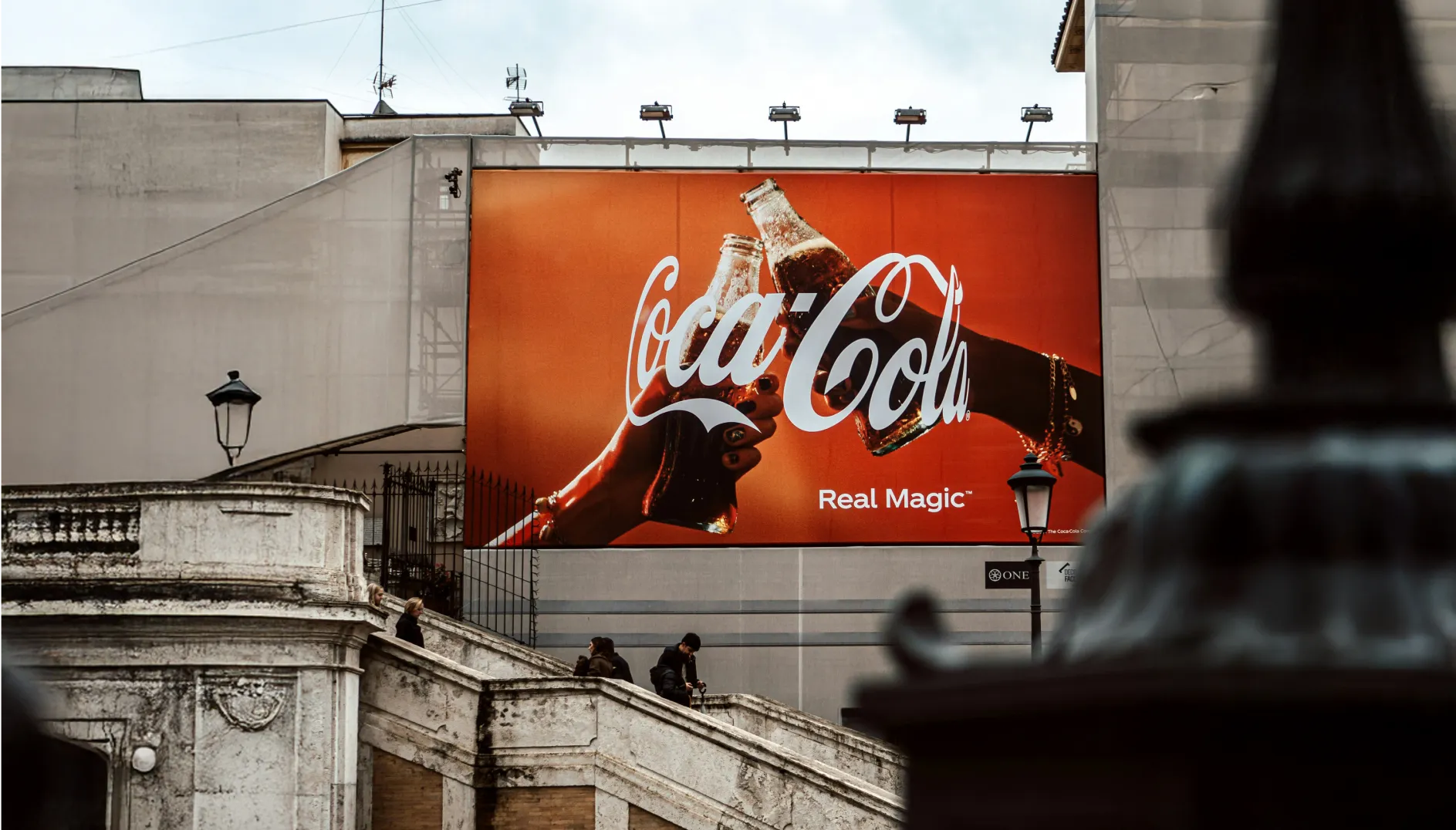The mere exposure effect: why seeing often means loving (or liking).

In the dynamic and often unpredictable world of communication, we are constantly searching for strategies that not only reach our audience, but leave a lasting impression—turning attention into interest, and interest into preference and action. We invest in sophisticated analysis, disruptive creativity, and cutting-edge technologies, convinced that persuasion lies in the complexity of the message or the originality of the stimulus. And yet, one of the most powerful and pervasive psychological principles influencing audience preference and decision-making is, at its core, surprisingly simple: mere exposure.
We’re talking about the Mere Exposure Effect (or MEE), a concept made prominent by social psychologist Robert Zajonc as early as the 1960s. His central thesis—almost disarmingly simple—is that the mere and repeated exposure to a stimulus, whether an unfamiliar word, a face, a sound, a logo, or an ad, tends to make that stimulus more likable or positively perceived over time, even in the absence of any meaningful interaction or explicit reinforcement. It doesn’t need to appeal to us initially, nor does it need to produce a positive experience; the simple fact of encountering it repeatedly is often enough to build a sense of familiarity that, often subconsciously, turns into preference.
For those working in strategy and advertising, ignoring the Mere Exposure Effect means overlooking one of the primary drivers of brand perception, campaign effectiveness, and ultimately, consumer behavior.
The Scientific Roots of Mere Exposure
Before Zajonc’s systematic studies, it was commonly believed that liking and attitudes were formed primarily through rational processing, evaluation of features, or direct association with positive or negative experiences. Zajonc challenged this view, demonstrating that simple passive exposure was sufficient.
In his pioneering experiments, he exposed participants to neutral and unfamiliar stimuli—such as invented Turkish words or never-before-seen Chinese characters—varying the frequency with which each was shown. Participants were then asked to rate how much they “liked” the characters or whether the words sounded as if they had a “good” or “bad” meaning. The findings were unequivocal: the more frequently a stimulus was presented, the more positively participants rated it. This held true even when participants were not consciously aware that they had seen one stimulus more often than another.
Subsequent studies replicated these results using a wide variety of stimuli: geometric shapes, musical melodies, photographs of unfamiliar faces, even fictitious brand logos. The conclusion was always the same: even minimal familiarity breeds liking.

Why Does It Happen?
The next obvious question is why the human brain works this way. Psychological and neuroscientific research has proposed several complementary explanations:
One of the most robust hypotheses involves cognitive fluency. When we encounter a familiar stimulus, our brain processes it more quickly and with less effort than a new one. This ease of processing is interpreted by the brain as a positive feeling. It’s as if our mind rewards efficiency. A stimulus we recognize instantly, that requires no effort to process, makes us feel comfortable—and that comfort translates into liking.
Another mechanism involves the reduction of uncertainty and potential threat. Something familiar is always safer than something unknown. As the saying goes, “better the devil you know than the devil you don’t.”
These mechanisms work together—often outside of our conscious awareness—to infuse a sense of positivity and preference toward what we encounter repeatedly.
The MEE in Action
The Mere Exposure Effect is not just an academic curiosity; it’s the foundation of countless successful marketing and advertising strategies.
Consider brand building. A logo, a name, a slogan, or a jingle doesn’t become iconic simply because it’s creatively brilliant, but because it’s consistently exposed to the public over time. Every time a consumer sees the Coca-Cola logo, hears the McDonald’s jingle, or catches sight of the Nike swoosh, familiarity is reinforced. This familiarity, cultivated through decades of consistent and coherent presence, transforms the brand into something not just recognizable but perceived as trustworthy, safe, and ultimately preferable. Consistency in visual identity and tone of voice across all touchpoints isn’t an aesthetic whim—it’s a fundamental strategy to maximize the cumulative impact of mere exposure.
In media planning, the Mere Exposure Effect translates directly into the concept of frequency. A media planner knows that reaching an audience once isn’t enough—it’s essential to reach them a sufficient number of times.
Studies on advertising effectiveness show that ad recall, brand recognition, and purchase intent tend to increase with the number of exposures—at least up to a certain point. Empirical data from large-scale campaigns confirms that hitting a certain average frequency (often discussed in the industry as “the magic number,” although there is no universal one) is crucial to moving the needle on brand awareness and brand consideration, leveraging increasing familiarity.
Even ad formats like Out-of-Home (OOH)—billboards, transit ads—are inherently based on the Mere Exposure Effect. Even if attention to a single ad is fleeting as we drive by or wait for the bus, the daily repetition of that encounter over weeks or months embeds the brand in our visual environment, making it familiar and part of our perceptual routine.
In today’s digital world, retargeting is perhaps the most conscious and direct application of the Mere Exposure Effect. Repeatedly showing ads to users who have already shown interest by visiting a website or engaging with a brand capitalizes on existing familiarity and reinforces it. The goal is to transform that initial fleeting interest into a sense of familiarity and trust that facilitates conversion.
Even in social media marketing, a consistent presence in users’ feeds, the repetition of visual elements or key slogans (even across different creatives), helps build that familiarity that makes a brand feel comfortable and recognizable, standing out amid the endless flow of content.
Limits and the Risk of Overexposure
The Mere Exposure Effect is not a magical, infallible formula—it comes with critical challenges. The most important is the inverted “U” curve in the relationship between frequency and liking. Yes, liking increases with familiarity—but only up to a point. Beyond an optimal number of exposures, the effect saturates and can even reverse: familiarity turns into boredom, irritation, and, at worst, a negative perception of the brand. This is the dreaded advertising “wear-out.” Managing this curve—finding the right frequency balance—is one of the key challenges in media planning.
Moreover, the Mere Exposure Effect works best with stimuli that are initially neutral or slightly positive. If a brand or ad evokes a strong negative reaction on first contact, repeated exposure will not only fail to correct that perception but may reinforce it, making the stimulus feel even more annoying each time it appears. Familiarity with something we dislike simply makes us dislike it more.
Context also matters. Repeatedly exposing a brand in a negative context or next to problematic content can create negative associations that cancel out or outweigh the positive effect of familiarity. Online brand safety, for example, is vital not only for protecting reputation but also for ensuring that exposure occurs in environments that don’t taint the brand.
Finally, in a world saturated with stimuli, even gaining a sliver of the audience’s attention is an increasingly difficult challenge.

Navigating the Digital Age
The digital age has revolutionized how the MEE is applied. On one hand, it offers unprecedented control and measurement of frequency, allowing for optimized ad spend to maximize positive familiarity while avoiding overexposure. On the other, the fragmentation of channels and hyper-saturation make it more complex to ensure that exposure is truly perceived and that cross-platform frequency is managed coherently.
For strategy and advertising agencies, the direction is clear: the Mere Exposure Effect is a psychological cornerstone to build upon—not a trick to be blindly exploited. An effective strategy integrates scientific understanding of the MEE with data-driven media planning, creativity that can sustain interest over time, meticulous attention to context, and constant measurement of its impact on brand perception.
It’s not just about showing a brand as much as possible, but about showing the right brand, in the right way, in the right context, and the right number of times for that specific target. Familiarity built intelligently becomes a powerful ally in the battle for consumer attention and preference.
This is where Google Meridian comes in—an open-source Marketing Mix Modeling (MMM) project created by Google to help companies and agencies measure and optimize the effectiveness of their marketing investments, even without heavily relying on user-level tracking (thus better respecting privacy).
In other words, it helps determine what impact advertising investments on TV, digital, print, out-of-home, radio, etc., have had on sales or conversions, using aggregated data instead of individual-level data.
Google Meridian helps manage mere exposure within marketing mix modeling, because it includes mechanisms to distinguish the real effect of advertising from the effect of mere exposure (i.e., the fact that a user was simply exposed to a campaign, without it necessarily having a direct impact on their behavior).
So, Google Meridian doesn’t just measure how many people saw the ad—it tries to estimate how much that exposure actually influenced results. And it corrects for the effect of mere exposure to provide a more realistic estimate of marketing’s contribution.
In Summary:
The Mere Exposure Effect reminds us that our psyche is deeply influenced by simple familiarity. This principle, studied for decades, remains surprisingly relevant and critical in today’s complex media ecosystem. For brands, understanding the subtle power of mere exposure, strategically managing its frequency, monitoring its impact, and combining it with relevant messaging and a positive context means holding a key that opens the door to familiarity—which over time translates into trust, liking, and ultimately, market success. Familiarity is not a detail; it is a strategy that, if used wisely, can transform perception and guide choices. It is the quiet superpower every strategist should know and respect. At HT&T, working in strategy, we’ve learned how to harness it—and we are using Google Meridian to interpret it the right way.
Reference and bibliography:
- Zajonc, R. B. (1968). Attitudinal effects of mere exposure. Journal of Personality and Social Psychology, 9(2, Pt. 2), 1–27.
- Aron, A., Aron, E. N., & Allen, J. (2000). The “mere exposure” effect through implicit learning: Implications for intergroup relations. In F. Blanchard, F. T. Hartley, & J. P. Rice (Eds.)
- Janiszewski, C. (1993). Preattentive mere exposure effects. Journal of Consumer Research, 20(3), 376-392
- Google Meridian – https://developers.google.com/meridian
Continua a leggere
And it consumes less energy.
To return to the page you were visiting, simply click or scroll.


